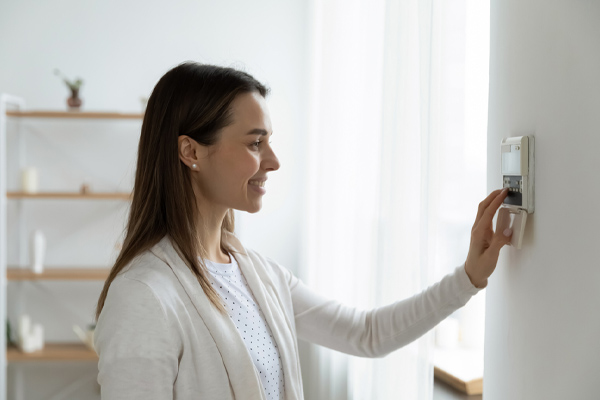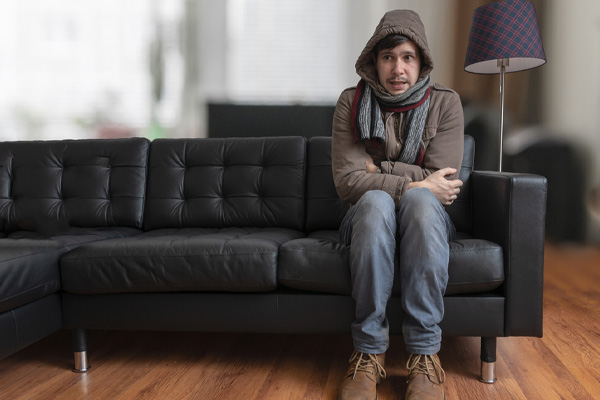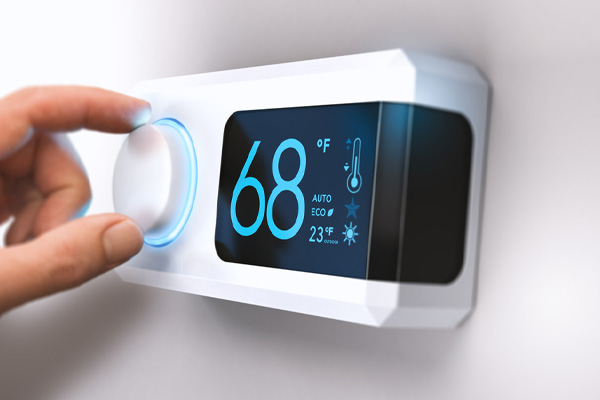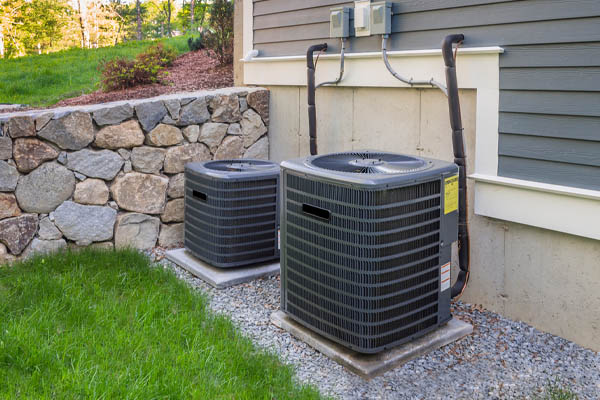Auxiliary Heat vs Emergency Heat On A Heat Pump

There are several heat pump settings you might not be familiar with when you look at your thermostat, such as settings for emergency heat and auxiliary heat. Many homeowners might have seen these settings and even used them at some point but not actually completely know what they do. Read on to take a closer peek at auxiliary heat vs emergency heat.
Heat Pump: Auxiliary Heat vs. Emergency Heat
Contents
- 1 Heat Pump: Auxiliary Heat vs. Emergency Heat
- 1.1 What Is Auxiliary Heat On A Heat Pump?
- 1.2 What Is Emergency Heat On A Heat Pump?
- 1.3 When To Use Auxiliary Or Emergency Heat
- 1.4 Heat Pump Can’t Produce Enough Heat
- 1.5 The Heat Pump System Is in “Defrost Mode”
- 1.6 Signs Your Heat Pump is in Defrost Mode
- 1.7 How to Stop Auxiliary Heat From Turning On
- 1.8 Conclusion
- 2 Call Lawes Company for All Your HVAC Needs
HVAC manufacturers use the terms ‘emergency’ and ‘auxiliary’ on heat pumps. These two terms virtually have no difference in both settings as the two provide additional heat. The heat pump can pull adequate heat in fairly warm weather from the inside, so the indoor temperatures stay comfortable. However, the cycle is reversed in conditions like frigid weather, so the heat pump will fail to do this. This is where the heat pump’s auxiliary heat function comes in. On the other hand, emergency heat is a manual function that can be utilized during issues with the heat pump.
What Is Auxiliary Heat On A Heat Pump?
Auxiliary heat is an automatically activated setting during times when there isn’t enough heat outdoors for the heat pump to use to ensure the indoor temperatures remain at a comfortable level. A heat pump in this mode will keep pulling in as much heat as possible, but it also extracts heat via a secondary source. This way, the desired temperature is reached. The heat pumps utilize their built-in electric heating coils to do this.
Auxiliary heat helps the system buildup to have higher temperature indoors. If there is an increase in outdoor temperatures, the system won’t need a secondary heat source anymore. The heat pump will then automatically turn off the auxiliary heat setting.
What Is Emergency Heat On A Heat Pump?

As its name suggests, heat pump emergency heat settings is only utilized during emergencies. It needs to be manually turned on when situations like system malfunction happen. The homeowners typically don’t have enough time to call a technician to repair the system when a malfunction occurs. They will still require the heat pump to keep generating heat. The emergency heat mode can be activated during this interim period to make up for the deficiency. This function is the system’s secondary heat source, so the heat pump continues to reach the desired temperature.
When To Use Auxiliary Or Emergency Heat
The auxiliary mode is meant to work as a backup to the heat pump in situations when the thermostat register is displaying at least a three-degree difference between the set temperature and the actual temperature. At this point, the conditions in your house will be uncomfortable because the temperatures will be lower. The auxiliary function will prompt the heat pump to produce more heat.
On the other hand, the emergency heat is used only when there’s an issue with the heat pump’s functionality. This is a manual function, so it can be switched off when a technician arrives to repair the problem.
Heat Pump Can’t Produce Enough Heat
Sometimes, the heat pump cannot produce enough heat for the home to stay warm. This is due to the heat pump’s inability to generate adequate warmth to reach the set temperature. The extra energy is taken from the auxiliary heat mode so that this kind of discrepancy is taken care of. The system activates the heat pump’s electric resistance heating function when the auxiliary heat mode is on.
The Heat Pump System Is in “Defrost Mode”
Ice accumulates on the outdoor unit at times due to low temperatures. As a result, the system will go to Defrost Mode to melt this ice buildup. The system will force hot refrigerant through the outdoor heat pump to melt the ice during frigid weather. A heat pump on Defrost Mode will stop heating the house, so the auxiliary mode will automatically switch on to keep your home heated.
Signs Your Heat Pump is in Defrost Mode
A heat pump that’s running in Defrost Mode will do the following:
- Generate water or steam from the outdoor heat pump
- Switch on the blinking light indicator, but this component is only present in some models
- The outdoor unit fan stops operating
How to Stop Auxiliary Heat From Turning On
The issue with auxiliary heat mode is that the heat pump is pushed to the limit to generate enough heat at very low temperatures. This is a situation you don’t want happening. This electrical/mechanical exertion can only cause problems. Therefore, you need to implement some changes you need to make in your home to stop the auxiliary heat mode from switching on and avoid the issues that might develop. These changes include:
Lower The Set Heat Pump Temperature

The indoor thermostat might be set at a too-high temperature that the auxiliary heat switches on to make up for the heat that the heat pump can’t produce. Your HVAC system is put under unnecessary stress when this happens. Avoid this by ensuring that the set temperature is between 62 to 68 degrees. This way, your home stays adequately warm while keeping your heat pump evenly functioning.
Make Your Home More Comfortable
Making your home a bit warmer during the cold season helps your home heating system. During the day, keep curtains drawn, or the window shades open so light and heat can get in. Ensure that all doors and windows leading out are closed and locked. You should also wear thick or layered clothes to keep warm instead of increasing the temperatures of your heat pump.
Use Your HVAC Zoning To Your Advantage
If you have a heat pump that offers HVAC zoning, like a multi-zone ductless heat pump, turn off your system in certain areas if possible. For instance, switch off the heating in unoccupied rooms in your house. Ensure that the doors and vents are closed. This way, the heating system can distribute warm air to other rooms around your home, keeping occupied areas in your home warm and comfortable.
Thermostat Is Constantly on Auxiliary Heat Setting
You might find that your thermostat is set on auxiliary mode for long periods during winter. This is because the HVAC system can’t produce enough heat to meet the home’s demands. Call a professional HVAC technician if this is the case so that your system can be inspected. Your system likely has an issue or a problem with its sizing or capacity.
Schedule Seasonal Heat Pump Maintenance

Ensure that your system receives yearly maintenance checkups. A well-maintained system is reliable and will have a longer service life. It is recommended that an inspection be scheduled before the winter season begins so that any problems are repaired, and damaged components are replaced or repaired. This is also the best time for the system to get services so it can be cleaned and the filters replaced. All needed repairs can also be done before the cold season arrives.
Conclusion
The heat pump operates the hardest during the cold season. It might be equipped with functions and features that ensure it is reliable even at extreme temperatures, but it won’t always work at its best if there is too much stress on the system because of high demand. Careful steps are needed to make sure your heat pump is winter-ready.
Call Lawes Company for All Your HVAC Needs

Lawes Company provides the best HVAC services in the Monmouth and Ocean Counties, New Jersey region. We are composed of highly qualified technicians who can give you satisfying outcomes for repairs, replacements, installations, and tune-ups. Everyone in our team is capable of delivering effective solutions for your heating and cooling equipment.
Lawes Company makes it a point to keep service costs competitive. You are sure to get good value for your money. We offer maintenance services to boost your system’s energy efficiency, increase your comfort, and lower your utility bills. We can also repair or replace systems depending on the situation. For the latter, we can point you to a modern unit that matches your household needs. Every service is backed by a satisfaction guarantee so you can deal with us with utmost confidence. Schedule a home visit from us that includes free estimates. Call us today!
Contact us now at (732) 741-6300 to find out more!